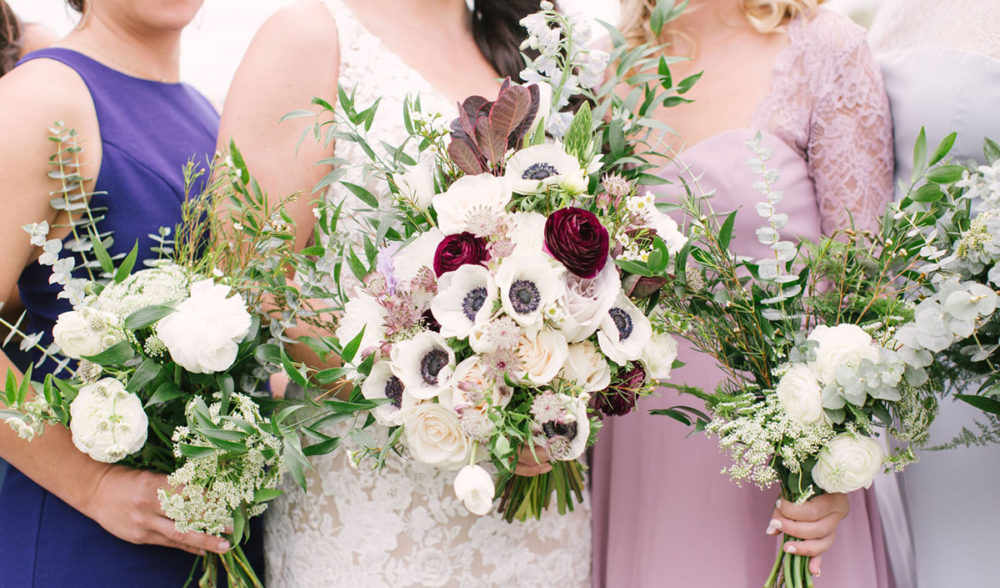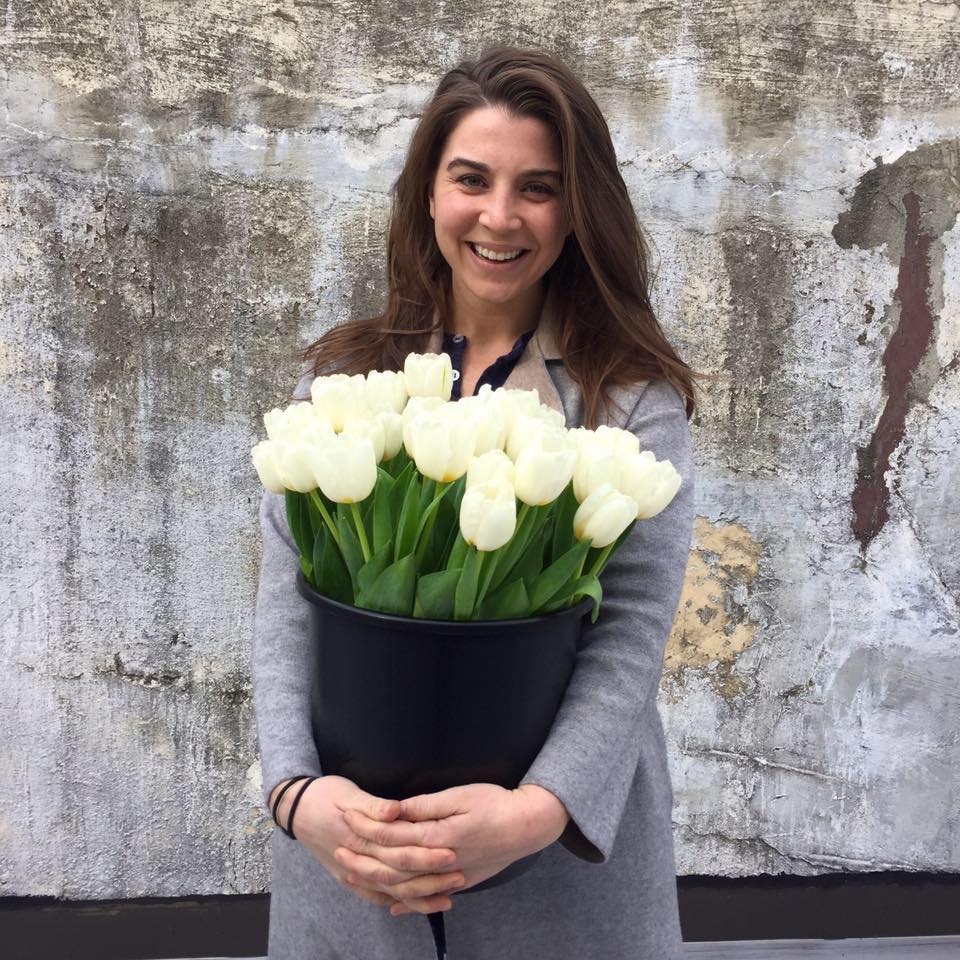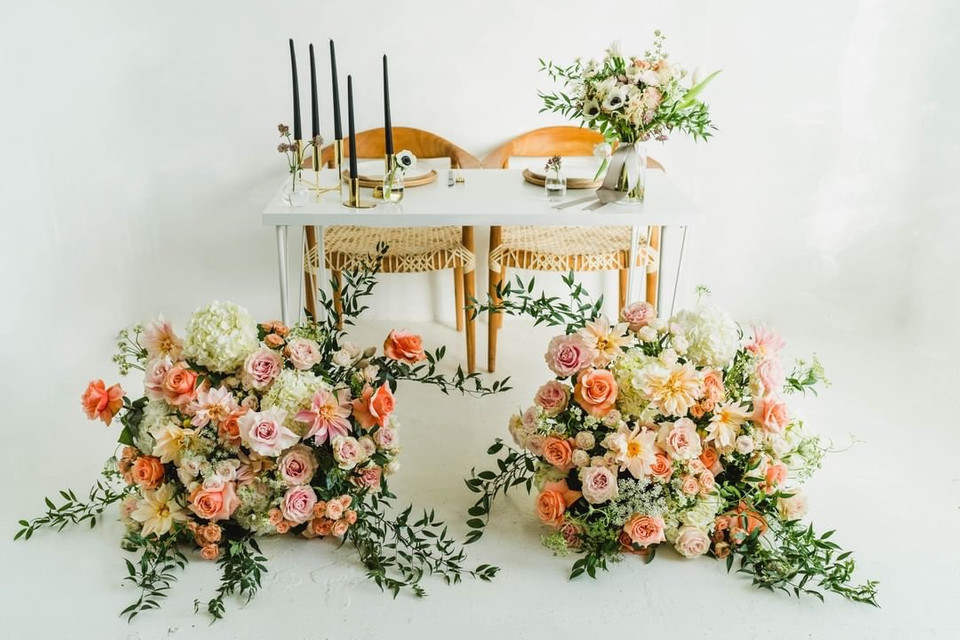You might say Cameron Hardesty is of two minds, one focused on tech and the other on her creative passion, flowers. She learned her art from some of the best, including her first mentor, the legendary Laura Dowling, former White House chief florist, and Gregor Lersch, the inimitable German floral designer and nurseryman. As UrbanStems’ first head of product, Hardesty was responsible for everything from farmer relationships and supply chain management to designing bouquets. The idea for her D.C.-based startup, Poppy, was born while designing flowers for her own wedding in 2017. She envisioned a tech-enabled platform that would partner with local florists to streamline the process of choosing and sourcing event flowers, saving couples money along the way. By summer of 2019, Poppy’s first bride walked down the aisle. Here, Hardesty shares her favorite 2020 wedding flower trends and tips, as well as a video tutorial on how to make a French hand-tied bouquet.
Q&A with Cameron Hardesty
Flower: Since we first touched base with you about wedding flower trends, our world has changed rapidly. How have you and your team adapted?
Cameron Hardesty: Yes, it certainly has changed enormously since we first spoke. Our team is holding up well, and it’s been pretty remarkable to see how quickly our partners at the farms have been able to adapt, try new things, and support us in so many ways. Since 75% of our revenue for the spring has been postponed to summer, fall, or 2021, and we found ourselves with every weekend free all of a sudden, we quickly pivoted to start selling DIY, arrange-at-home flower kits directly from our farm partners. There’s a real sense of needing to take care of yourself at the same time as you’re staying home, and I think our Poppy At Home kits tapped into something deep within people—folks have responded incredibly positively to the idea of learning a new skill and bringing nature indoors during this time.
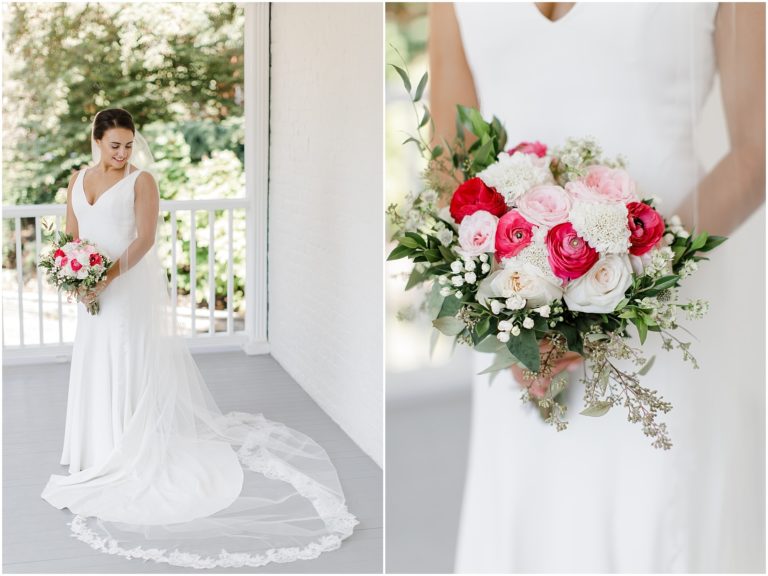
Bouquet materials: pink and white O’Hara garden roses, hot pink ranunculus, white scabiosa, white astrantia, seeded eucalyptus, Italian Ruscus, myrtle, and white bouvardia (Tara and Renata Photography)
As events have been postponed due to the coronavirus, we’ve seen the rise of the micro wedding. What has it been like for you to witness couples’ resilience? How can they still incorporate flowers into their special day?
We’ve said it over and over again internally at Poppy, but—love will always win, and it will always find a way. My heart goes out to couples who have had to make the difficult decision to postpone their weddings, but I have loved to see couples, including some of ours, opt for a micro wedding because they just don’t want to wait to make it official. One of our brides was scheduled to have her wedding mid-March, and postponed with only a week before her wedding—this was right in the middle of the chaos at the start. They went ahead and got married in a private ceremony with family only, and she asked us to make her a bouquet. That inspired our “Micro Wedding Package”—a bridal bouquet and one boutonniere, for other couples who find themselves in the same position.
Watch Video: Cameron Hardesty Demonstrates How to Make a French Hand-Tied Bouquet
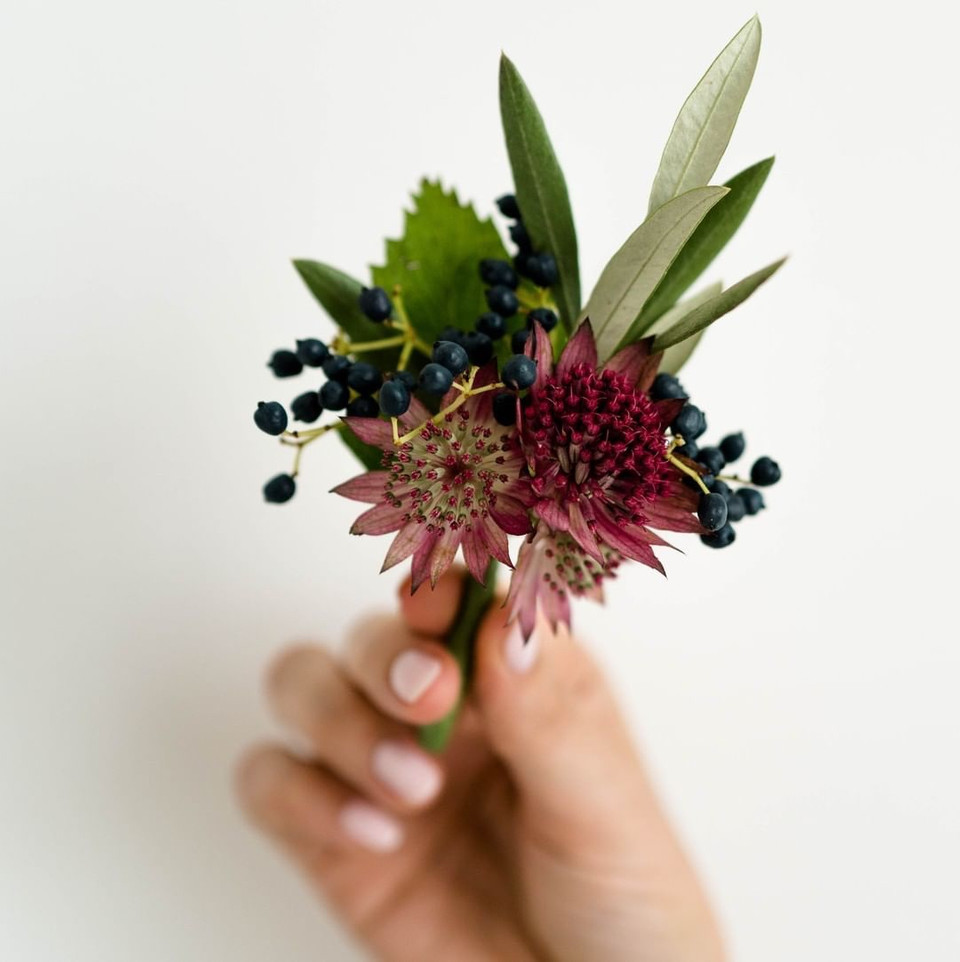
Boutonniere materials: burgundy astrantia, viburnum berry, and olive
we’ve noticed a trend toward sustainability in the industry, including dried flowers, foraged elements, repurposed flowers, and alternatives to floral foam. What wedding flower trends tie into sustainability?
From a design perspective, an obvious answer here is pampas grass! We have all seen it take our industry by storm, and I personally love it because it lasts forever, and you can treat it like a rental and reuse it multiple times. But you have to beware of it shedding.
Another trend I love is painted greens. I find that the floral paint preserves the shape and size of certain greens really nicely and paired with pampas grass and less thirsty stems like carnations, you can easily get away with an installation using no foam or water sources.
Design-wise, I also think a trend toward more sculptural and asymmetrical designs is a clever sustainability (and cost) hack—the designs themselves call for fewer flowers but can still be sold at a great price. We’ve had brides ask us for Ikebana-style table décor using statement vases and single stems, which I think is also a nod to sustainability and less waste.
Lastly, I’m seeing more and more solutions pop up to give gently used flowers a second life. We’re partnering with a nonprofit local to D.C., Plants and Blooms ReImagined, to offer our clients the option to have their flowers recovered, rearranged, and delivered to local shelters and elderly care facilities. We especially love donating flowers to a women’s shelter in D.C. called N Street Village, who I first connected with when I was working at The White House drug policy office. While events have been suspended during Covid, we’re now donating flowers to Plants and Blooms ReImagined for every Poppy At Home kit we sell, so they can keep their flower programing going during this critical time, an initiative we call #FlowersForAll.

Astilbe adds an ethereal touch to a bouquet of garden roses and ranunculus.
What Are The Biggest Wedding Flower Trends In Terms Of …
Specific blooms?
I’m seeing more of a call for mixing certain tropicals, particularly orchids, into bridal bouquets.
Foliage?
Painted and bleached foliage and foraged.
Color palettes?
I think this is really regional. I see both saccharine pastels and bold colors, particularly using painted or dyed flowers, and ‘80s/early ‘90s-inspired colors and shapes in NYC design work, and now it’s bled into corporate brand work significantly, which reinforces the trend to a broader audience. In California, there’s so much abundance just outside designers’ front doors, and so many regionally and locally grown flowers, I think the artifice of painted flowers and highly structured arrangements holds less sway, but the influence is there. We gather data from hundreds of customers each month at Poppy, and the predominant colors requested for weddings are white, blush, and cream. Some things never change!
Style? For instance, when brides and grooms take Poppy’s quiz, do most often lean toward Boho, Colorful, Modern, Rustic, Simple, or Traditional? What are the hallmarks of the most popular floral style(s)?
Simple, Boho, and Rustic are the most popular, then there’s a steep drop-off, and customers then are split across modern, traditional and colorful.
- 26% Simple
- 19% Boho
- 19% Rustic
- 10% Modern
- 9% Traditional
- 9% Colorful
- 8% No response
Among our data, there’s a high correlation between choosing Simple style and choosing white as a main color, along with blush and green. Boho customers are more likely to choose blush as a color, and Rustic customers are more likely to prefer greenery instead of flowers.
Are there any major flower comeback stories in 2020?
A couple years ago, the story was all about carnations. Now that carnations are cool again, I see the standard rose making a comeback. So many clients admit to knowing very little about flowers but are often against roses (but very in favor of garden roses). Now that designers are reflexing rose petals on standard roses to give them a different look, they’ve suddenly become cool again.
Let’s talk tabletop trends, like this beautiful table featuring flowers in scattered bottles that you shared with us.
Yes! A lot of our customers choose to decorate with bud vases and loose greenery, specifically because it’s a more budget-friendly option than centerpieces, particularly as table counts get high. This trend is versatile across the top two styles our customers show preference for: Simple and Boho, depending on how the rest of the table is set, and what flowers are used.
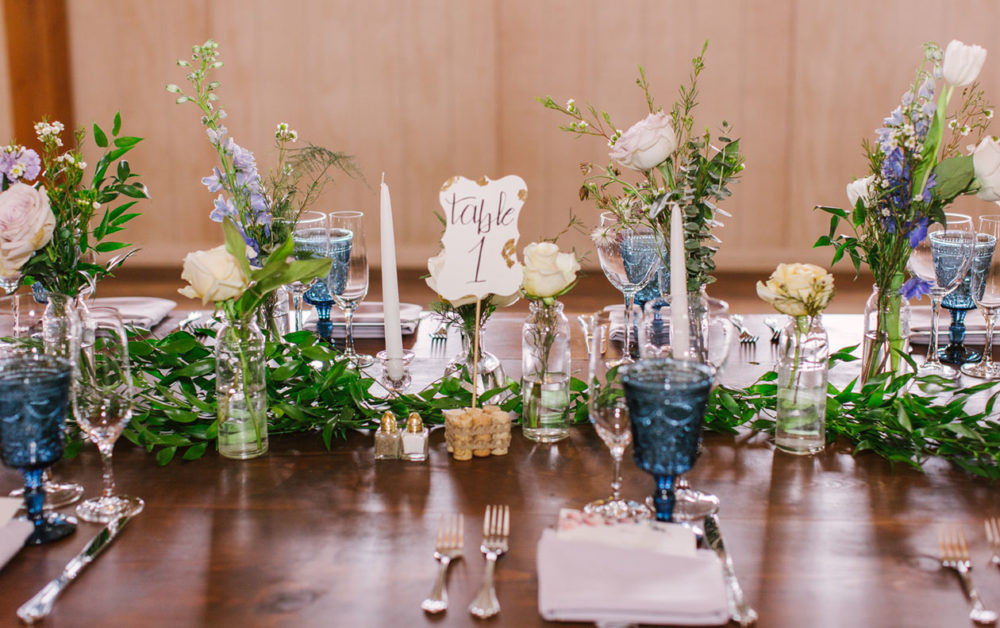
Pro tip: For a budget-friendly centerpiece, opt for loose greenery and a collection of petite arrangements in bud vases or small bottles scattered along the table. (Leslie Maron Photography)
Name the hardest-working flowers and foliage for adding beauty and interest, without being hard on your wallet.
For foliage, smilax. You can get so much coverage from it for an installation, but also use it in bouquets and arrangements, and it’s so sculptural and organic. When I first used it a few years ago, I remember being baffled that the wholesaler sold it to me by the “trash bag”. That was the unit of measurement! But as soon as I got my hands on it, I understood.
For flowers, I love a hardworking snapdragon or stock. You can overdo it, but burgundy snapdragon can look really elegant next to more premium flowers in a bridal bouquet.
Use existing structures—walls, doorways, arbors—for all-green installations with smilax as the base, or even only green. It’s relatively quick to design if smilax is the only green involved, and you’ll save on rental fees.

Pro-tip: Use “flower clouds” as altarpieces for the ceremony (above) and repurpose them for your sweetheart table at the reception (below). (Hannah Love Yoon Photography)
Three important factors to consider when choosing a florist for your wedding are …
- Trust is the most important thing when it comes to your wedding floral designer. Do you trust that this person understands your vision and can bring it to life?
- Professionalism and communication—you don’t want any surprises. Get everything in writing, and get on the same page, style-wise using as many inspiration images as possible.
- Ask to see their portfolio of past work. You want to be sure they can actually pull off what’s in your contract!
Learn more about Poppy at yourpoppy.com or @yourpoppyflowers on Instagram.
By Terri Robertson | Photography courtesy of Poppy
Floral Tutorial with Cameron Hardesty
In this video, Cameron shares how to make a French hand-tied bouquet, a technique she learned from her mentor Laura Dowling, former White House chief florist, whom she met while working at 1600 Pennsylvania Avenue during the Obama administration. The bouquet demonstrated here is destined for a “micro wedding” for a bride whose larger ceremony was postponed due to coronavirus quarantines. Original air date: May 1, 2020 on Flower‘s Instagram Live

